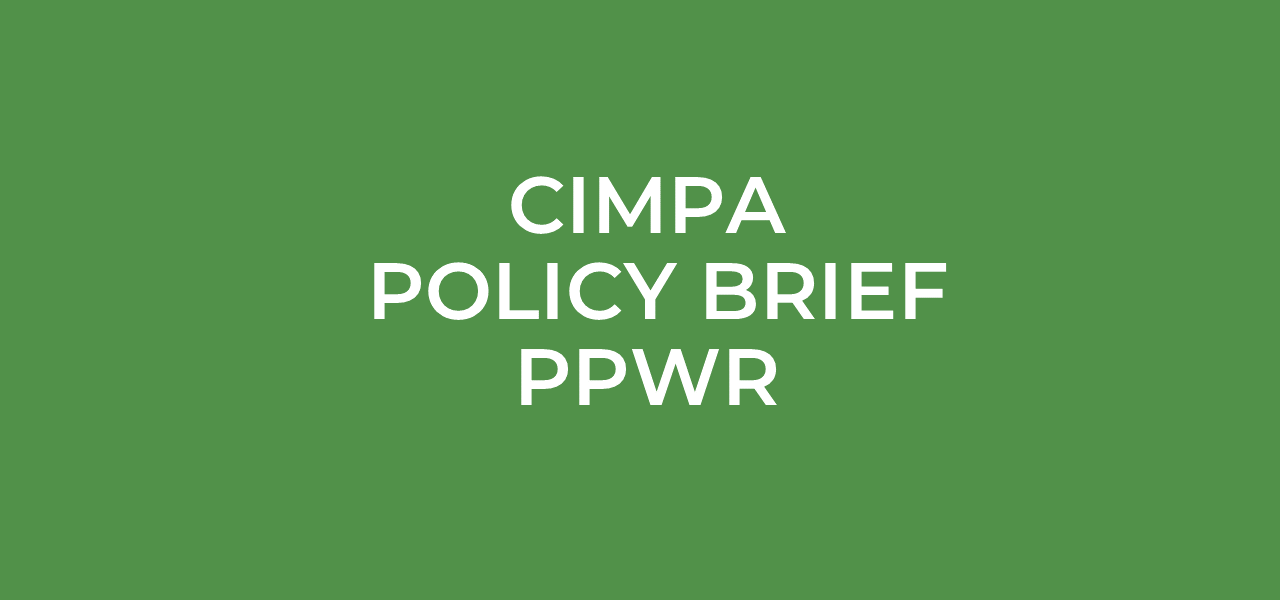EuRIC– the European Recycling Industries’ Confederation – coordinates the tasks related to legislative and pre-normative actions. As part of this activity, EuRIC is monitoring the legislative initiatives that have an impact on the circularity of multilayer films. Being the Packaging and Packaging Waste Regulation (PPWR) one of the most important piece of legislation at EU level, the CIMPA partners have widely discussed and share their opinions on how this new regulation can boost the circularity of plastic packaging.
Last November, the European Commission published its proposal for a new Regulation on Packaging and Packaging Waste. Reducing packaging waste, stablishing reuse systems, and boosting high-quality recycling are among the top priorities of this proposal. When it comes to plastic packaging, the proposal also sets minimum plastic recycled content targets.
At this moment, discussions are taking place at the European Parliament and Council and once an agreement is reached and the legislative act adopted, this piece of legislation will drive change toward more sustainable packaging.
CIMPA consortium, covering the whole value chain of the sorting, separation, recycling and manufacturing of multilayer films, have discussed and analysed the new proposed rules and the impacts on the circularity of plastic packaging.
As an international consortium, CIMPA finds that harmonized packaging rules across Europe are essential to preserve a smooth functioning of the internal EU market and ensure a high level of circularity of packaging.


Moreover, to make all packaging recyclable by 2030, the first step of the value chain must be addressed. When it comes to the design of flexible plastic packaging, mono material structure should be preferred. However, when highly demanding properties are needed, and therefore mono material structures do not suffice, specific recycling paths should be followed.
CIMPA calls for promoting measures aiming at improving design for recycling during the packaging product’s development, with preference towards sorting and recycling techniques with the lowest environmental footprint (see figure 1).
Another key aspect is the reintroduction of recycled materials into industrial processes. Recycled content targets are needed to stimulate the usage of recycled materials in new products. For food contact materials, they will be achieved through investments in R&D to improve the recycling capacity in Europe.
Last but not least, including digital marking technologies in the legislation is essential to facilitate the sorting of complex materials and to deliver food-grade recyclates.
This paper outlines CIMPA’s position on the proposed EU-wide rules on packaging, with a focus on key measures such as the recyclability criteria, recycled content target and digital watermarks.
